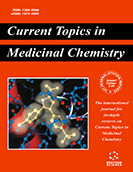Abstract
The human genome encodes approximately 100 phosphatases that belong to the protein tyrosine phosphatase (PTP) superfamily, whose substrates range from proteins to phosphoinositides and mRNAs. The hallmark for this superfamily is the active site sequence C(X)5R, also known as the PTP signature motif. The PTPs are key regulatory components in signal transduction pathways and the importance of PTPs in the control of cellular signaling is well established. Furthermore, there are compelling reasons to believe that PTP inhibitors may serve as novel medicinal agents for the treatment of various diseases. Based on structure and substrate specificity, the PTP super-family is divided into four distinct subfamilies: 1) pTyr specific PTPs, 2) dual specificity phosphatases, 3) Cdc25 phosphatases, and 4) LMW PTPs. The PTPs have similar core structures made of a central parallel β- sheet with flanking α-helices containing a β-loop-α loop that encompasses the PTP signature motif. Not surprisingly, they employ a common chemical mechanism for phosphate hydrolysis despite the differences in substrate specificity. Despite the conserved structural and catalytic properties, there are also sufficient differences in the active site pockets and its immediate surrounding environment among different PTPs. Further structural and mechanistic study will continue to be of considerable importance, providing a solid basis for inhibitor design.
Keywords: Protein, Tyrosine, Phosphatase, human genome
Current Topics in Medicinal Chemistry
Title: An Overview of the Protein Tyrosine Phosphatase Superfamily
Volume: 3 Issue: 7
Author(s): Wei-Qing Wang, Jin-Peng Sun and Zhong-Yin Zhang
Affiliation:
Keywords: Protein, Tyrosine, Phosphatase, human genome
Abstract: The human genome encodes approximately 100 phosphatases that belong to the protein tyrosine phosphatase (PTP) superfamily, whose substrates range from proteins to phosphoinositides and mRNAs. The hallmark for this superfamily is the active site sequence C(X)5R, also known as the PTP signature motif. The PTPs are key regulatory components in signal transduction pathways and the importance of PTPs in the control of cellular signaling is well established. Furthermore, there are compelling reasons to believe that PTP inhibitors may serve as novel medicinal agents for the treatment of various diseases. Based on structure and substrate specificity, the PTP super-family is divided into four distinct subfamilies: 1) pTyr specific PTPs, 2) dual specificity phosphatases, 3) Cdc25 phosphatases, and 4) LMW PTPs. The PTPs have similar core structures made of a central parallel β- sheet with flanking α-helices containing a β-loop-α loop that encompasses the PTP signature motif. Not surprisingly, they employ a common chemical mechanism for phosphate hydrolysis despite the differences in substrate specificity. Despite the conserved structural and catalytic properties, there are also sufficient differences in the active site pockets and its immediate surrounding environment among different PTPs. Further structural and mechanistic study will continue to be of considerable importance, providing a solid basis for inhibitor design.
Export Options
About this article
Cite this article as:
Wang Wei-Qing, Sun Jin-Peng and Zhang Zhong-Yin, An Overview of the Protein Tyrosine Phosphatase Superfamily, Current Topics in Medicinal Chemistry 2003; 3 (7) . https://dx.doi.org/10.2174/1568026033452302
| DOI https://dx.doi.org/10.2174/1568026033452302 |
Print ISSN 1568-0266 |
| Publisher Name Bentham Science Publisher |
Online ISSN 1873-4294 |
 22
22
- Author Guidelines
- Bentham Author Support Services (BASS)
- Graphical Abstracts
- Fabricating and Stating False Information
- Research Misconduct
- Post Publication Discussions and Corrections
- Publishing Ethics and Rectitude
- Increase Visibility of Your Article
- Archiving Policies
- Peer Review Workflow
- Order Your Article Before Print
- Promote Your Article
- Manuscript Transfer Facility
- Editorial Policies
- Allegations from Whistleblowers
- Announcements


























